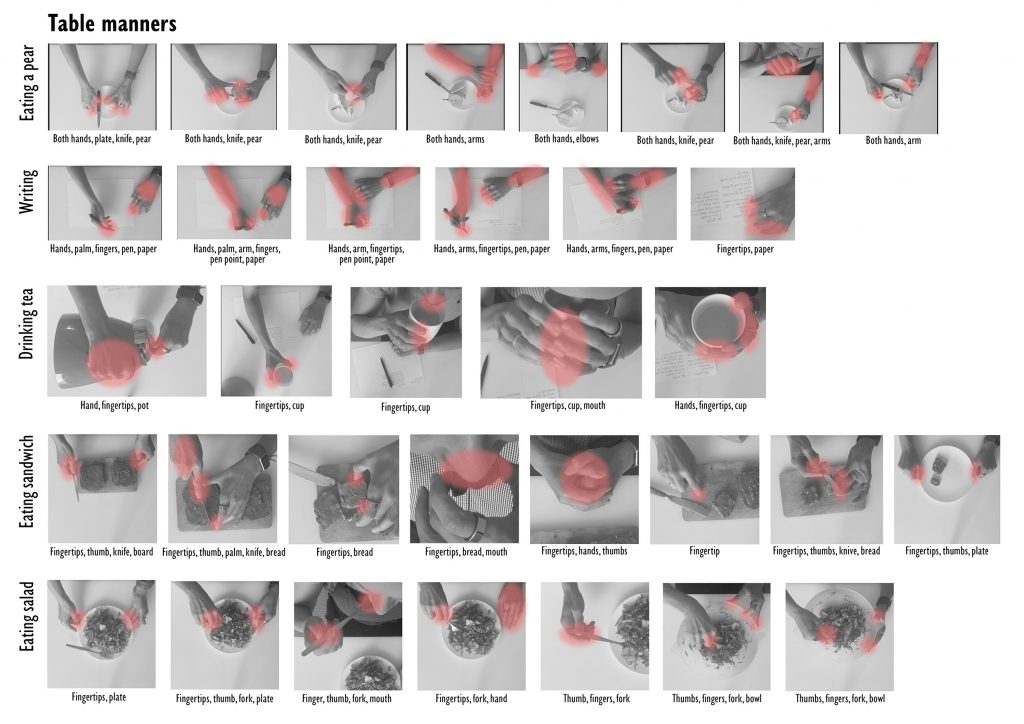Introduction
This is the first post for a new project called: Damian’s Dressing Table. The project builds on insights gained from the Magic Tea project [1], [2]. It’s objective, therefore, is still the same: to explore how technology can promote self-transcendent experiences (STEs) during everyday activities using interactive technology. The Magic Tea project started from the everyday activity of drinking tea, this project starts from an object often used in everyday activities: a table. From the embodied experiences at the table one activity will be chosen which can then be enhanced with technology to promote STEs.
Somaesthetic Design
In this project the main methodology used to for research and design is Somaesthetic (or Soma) Design. This is a design (research) approach which emphasizes first person, lived experiences with a focus on attention for bodily sensations and aesthetics [3]. This post describes observations of activities performed by the author. They form the starting point for experiments which are more embodied. The main objectives for the observations were to find out how the body moves and feels during some common activities performed at a table. Which parts of the body are used most often. It also explores skin contact with objects during the activity.

Recording actions
To this end a small home studio was set up with a video camera (phone) on a tripod and a table. This was a way to study myself while performing activities which regularly take place at this table. Later the video was analysed and key movements of every activity were captured as a still. The still was overlaid with a heat map which was created manually (view Fig. 1). This map indicates touch and pressure points on the skin.
Conclusions
From the observations it becomes clear that the fingertips are very important for all actions which require precision. Only in a few cases the whole hand is involved. The lower arms often come into contact with the table. Hands and fingers often touch each other between actions. One hand is often used to steady the objects, this is done in various ways.
Find out more about the next steps.
References
[1] D. Roberts. “Wisdom Interface.” Tools for Awareness. http://numuseum.nl/blog/category/wisdom-interface/ (accessed Aug. 26, 2024).
[2] D. Roberts, A. de Rooij, “Exploring Embodied Interaction to Support Self-Transcendence in the Art Installation ‘ Magic Tea ,’” xCoAx, Jun. 2023, doi: 10.34626/xcoax.2023.11th.292.
[3] Kristina Höök, Steve Benford, Paul Tennent, Vasiliki Tsaknaki, Miquel Alfaras, Juan Martinez Avila, Christine Li, Joseph Marshall, Claudia Daudén Roquet, Pedro Sanches, Anna Ståhl, Muhammad Umair, Charles Windlin, and Feng Zhou. “Unpacking Non-Dualistic Design: The Soma Design Case.” ACM Trans. Comput.-Hum. Interact. 28, 6, Article 40, Dec. 2021, doi: 10.1145/3462448